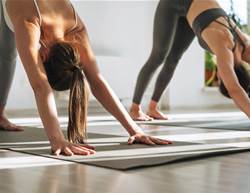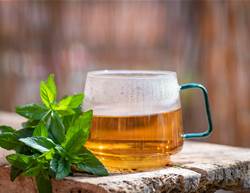Dim the lights
Once the sun sets, mirror that mood indoors by softening the lighting – use lamps instead of bright overheads. “This helps promote production of the hormone melatonin, which has a sedating effect,” says Dr Chris Winter, author of The Sleep Solution.
Save your face
You should be able to properly apply sunscreen to your face each morning in a minute or less, says dermatologist Dr Maritza Perez. The Cancer Council recommends using a teaspoon-sized dollop on your face for effective coverage, and don’t forget to include the areas around the eyelids and nose. Take a few more seconds each morning to apply SPF to the backs of your hands, your neck and your ears. “These are common spots for several kinds of skin cancer, so it’s vital not to miss them,” she says.
Unravel tensions
Try this quick-fix stress reliever from Dr Marilyn Glenville, author of The Natural Health Bible For Women: “Standing, lean forward and hold the elbow of your opposite arm with each hand and stay there for 30 seconds. You’ll notice that your breathing becomes deeper and tension is released across your shoulders and neck. Then slowly roll yourself back up and feel the tension wash away.”
Add your breakfast
Add 1–2 tablespoons of hemp seeds to your yoghurt, oats or smoothie to boost its plant-based protein. “Eating protein in the morning helps keep blood sugar and energy levels stable, which means your hunger and mood are more stable too,” says dietitian Desiree Nielsen, author of Eat More Plants.
Pause mid-meal
When you sit down to eat, take a moment to physically divide your food in half before you begin eating. “Consider the divide as a ‘speed bump’,” says Dr Michelle May, a reformed yo-yo dieter and author of Eat What You Love, Love What You Eat. “When you hit the bump, it reminds you to pause and slow down to reassess your hunger and fullness level – and stop before you’re too full.”
Check your breasts
“Always do it during the first week of your period, when the hormonal effects on breast tissue have subsided,” advises Dr Sherry Ross, author of She-ology. Follow this easy procedure.
STEP 1 Stand in front of a mirror with hands on hips.
STEP 2 Raise your arms over your head while looking for changes in your breasts.
STEP 3 Gently squeeze your nipples to look for any discharge or fluid coming from them.
STEP 4 Lie on your back and extend one hand overhead (the breast on that side is the one you’ll examine first). Using the opposite hand, run fingers over the breast in firm, purposeful circles. Move to the other breast and check it in the same way, then check your underarms.
Do some produce prep
Take a minute each morning – or the previous night – to cut up at least one fruit and/or vegie to snack on during the day. “It increases your intake of vitamins, fibre, minerals and anti- inflammatory phytochemicals, to improve digestion, support healthy skin, keep blood sugar stable and make your body more resilient against everyday damage,” says Desiree.









